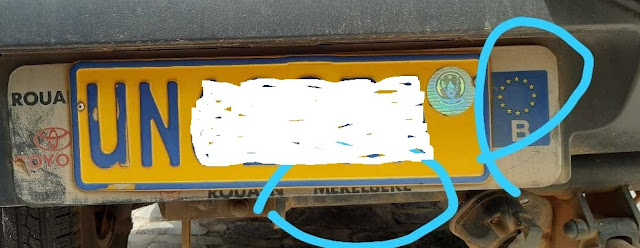On number plates and emissions
 |
| A UN staff member in Kigali drives a car from Merelbeke, Belgium |
It is an old habit when I am on the road: looking at the number plates of the cars in the traffic around me.
 |
| A Swedish car in Kigali, picture LP |
As
children, during long car journeys, we played games such as collecting as many
cars of a certain nationality or collecting as many cars of a certain brand.
Whoever picked "Mercedes", "Volkswagen" or "BMW"
fastest on the Deutsche autobahn usually won the game.
Car
watching, in other words. I still do it today.
In South
Africa, I paid particular attention to the number plates. From those, you could
tell which province the car was registered in. Personalised number plates are
another interesting phenomenon. What possesses someone to drive around with
"Wanted" on the car? Or "Hero"? It led to free associations
and musings on the relationship between number plate, car and owner.
 |
| A Dutch car in Kigali, picture: LP |
Here in Rwanda, it is other things again that stand out, more specifically the details on the back of the car. If you look closely, you can sometimes see a reference to the previous owner next to the Rwandan number plate. Was it a Swede, a Dutchman, a German or a Belgian? In which garage was the car bought? Yesterday I saw a car from Evergem, a small town in Belgium, in Kigali.
 |
| Screenshot IQ Air app, 25/9/2022 |
Good
riddance of all these dirty old car. Or was it? Those polluting cars were put
on transport, .... to Africa. The air quality in Kigali systematically scores
worse than that in Ghent, Belgium. Most likely where all those outdated and poorly maintained
cars play a leading role in this. When I cycle to work and am once again
enveloped in a thick, black cloud of exhaust fumes, I actually long for face-mask
time.



Comments
Post a Comment